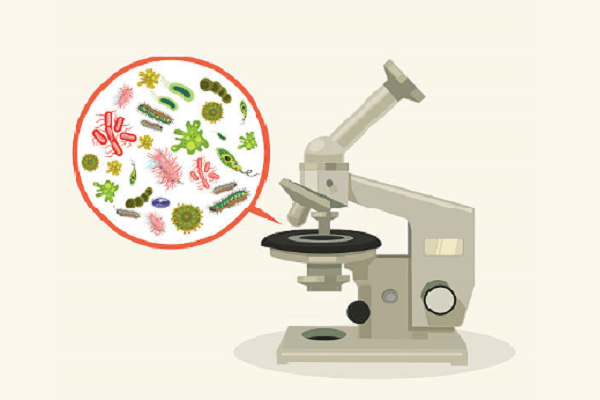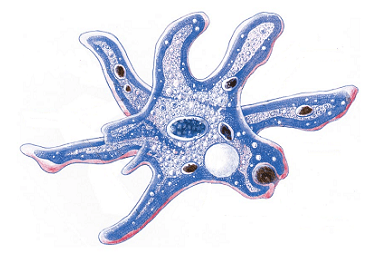Infectious diseases >>>> What is dysentery
What is dysentery.

Under the name "dysentery" there are two types of intestinal infectious diseases: amebiasis and shigellosis. These two diseases have some similarities and many differences, based on which the doctor can make a preliminary diagnosis, which, in turn, is supported by a biological analysis of the intestinal microflora.
Shigellosis (or bacterial dysentery) is caused by bacteria of the genus Shigella (about 40 serotypes in total). Shigella get on the mucous membrane of the small intestine, the distal part of the large intestine, causing inflammation, erosion, ulceration. Their toxins penetrate the bloodstream, which in turn leads to general intoxication of the body.
Bacterial dysentery is acute and chronic. Incubation period: up to 7 days, but most often symptoms of intoxication begin to appear within two to three days.
The most significant signs of bacterial dysentery:
- Chills
- High temperature (can rise up to 40 in Celsius )
- Lower blood pressure
- Headache
- Cramping pain in the lower intestines
- Drawing pains in the rectum, radiating to the sacrum
- Rapid stools mixed with blood and mucus (blood islets)
Bacterial dysentery is terrible with complications: infectious - toxic shock, colon perforation, peritonitis, etc.

Amoebiasis (or amoebic dysentery) is caused by protozoa (amoebas) - Entamoeba histolitica (these microorganisms can exist in three forms: vegetative, tissue, in the form of cysts).
The vegetative form of the pathogen lives in the lumen of the large intestine and in the feces. The tissue form is introduced into the intestinal wall and causes the appearance of ulcers, in the form of cysts, the parasite exists in the external environment (if cysts are accidentally swallowed, amoebiasis disease develops).
Amoebiasis can be acute, chronic, latent, and is also the cause of extraintestinal complications (abscess of the liver, brain, lungs; amoebic hepatitis; various skin lesions). Incubation period: from one week to three months. In contrast to shigellosis, the symptoms of intoxication of the body with amebiasis are poorly expressed: the temperature can be normal or subfebrile; diarrhea may alternate with constipation. The urge to defecate reaches 2-15 times a day.
It is necessary to pay attention to the feces of a reddish-brown color with an admixture of blood, and a characteristic feature of amebiasis is loose stools, which are completely colored with blood (associations: "raspberry jelly"), in contrast to shigellosis, in which blood is located in the feces in clusters. On the second - fifth day, clear mucus appears in the stool. Abdominal pain develops gradually and increases by the fifth or seventh day of the disease. According to this scenario, amebiasis develops in 70% of patients. But the remaining 30% of the infected, according to statistics, experience pain in the intestines, have loose stools, blood and mucous secretions already on the first - third days of the development of the disease.
The source and carrier of both types of dysentery is a person, and the path of transmission of the microorganism is fecal - oral: through dirty hands, contaminated objects, unwashed vegetables, fruits, herbs, contaminated food or water.
Since the causative agents of diseases of amoebiasis and shiggelosis are different microorganisms (in the first case, an amoeba, and in the second case, a bacterium), then etiotropic therapy is based on the use of drugs of different directions of action. For amoebic dysentery, antiprotozoal drugs are used: metronidazole, tinidazole, quiniofon, delagil, emetina hydrochloride; antidiarrheal drugs (except for Immodium, which cannot be used for infectious diseases of housing and communal services, since pathogenic organisms must be removed from the intestine) in different doses, depending on the severity of the disease.
For the treatment of bacterial dysentery, antibiotics (quinols, fluoroquinols) are used , taking into account the resistance of the identified strains of shigella. In addition to antibiotic therapy, Intesti bacteriophage or dysentery bacteriophage are used .
In addition to the specific antiprotozoal (with amoebiasis) or antibacterial (with shigellosis) treatment of these types of dysentery, a gentle gastrointestinal diet and restoration of water and electrolyte balance are necessary, since the body loses water during diarrhea. This means that you need to drink plenty of fluids and drip intravenous administration of isotonic saline solutions.
For successful treatment, both types of dysentery must be distinguished from each other and differentiated with diseases such as: salmonellosis, rotavirus gastroenteritis, escherichiosis, giardiasis, campylobacteriosis, ulcerative colitis and others.
Preventive measures are usually associated with adherence to sanitary and hygienic standards and careful attention to food and water consumed. Food should be thermally processed, vegetables, fruits, herbs should be thoroughly washed and, if possible, peeled off, drink water only from trusted sources or bottled (with an intact factory tightness of the lid). It is believed that dysentery is a disease of a warm climate, but since the carrier of the infection is a person who, being a carrier of infection, can move from a country with a warm climate to a country with a cold climate, then you can become infected at any time of the year.

Read

Read


























